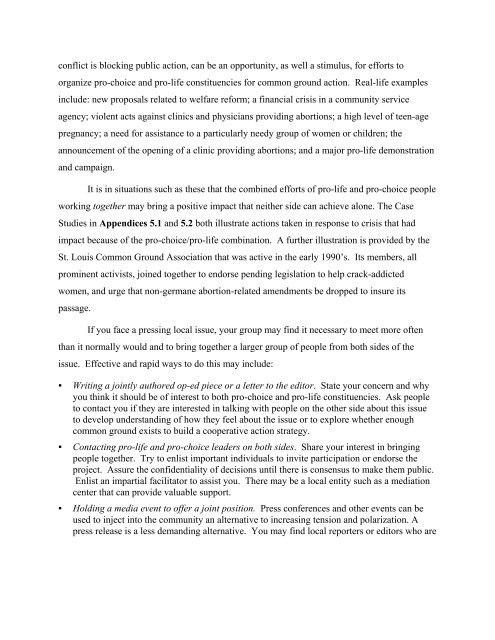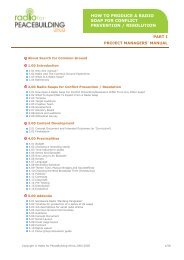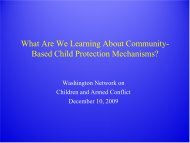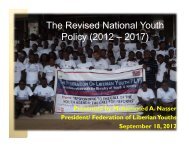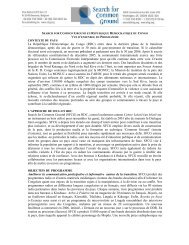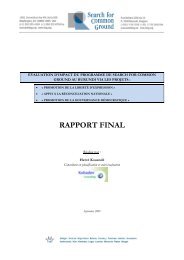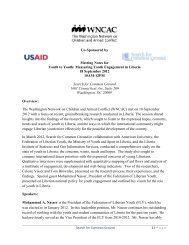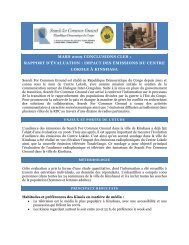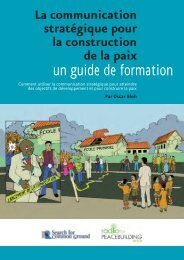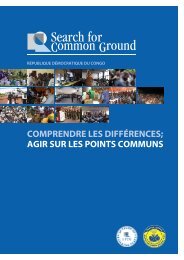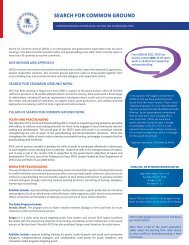The Common Ground Network for Life and Choice Manual
The Common Ground Network for Life and Choice Manual
The Common Ground Network for Life and Choice Manual
You also want an ePaper? Increase the reach of your titles
YUMPU automatically turns print PDFs into web optimized ePapers that Google loves.
conflict is blocking public action, can be an opportunity, as well a stimulus, <strong>for</strong> ef<strong>for</strong>ts to<br />
organize pro-choice <strong>and</strong> pro-life constituencies <strong>for</strong> common ground action. Real-life examples<br />
include: new proposals related to welfare re<strong>for</strong>m; a financial crisis in a community service<br />
agency; violent acts against clinics <strong>and</strong> physicians providing abortions; a high level of teen-age<br />
pregnancy; a need <strong>for</strong> assistance to a particularly needy group of women or children; the<br />
announcement of the opening of a clinic providing abortions; <strong>and</strong> a major pro-life demonstration<br />
<strong>and</strong> campaign.<br />
It is in situations such as these that the combined ef<strong>for</strong>ts of pro-life <strong>and</strong> pro-choice people<br />
working together may bring a positive impact that neither side can achieve alone. <strong>The</strong> Case<br />
Studies in Appendices 5.1 <strong>and</strong> 5.2 both illustrate actions taken in response to crisis that had<br />
impact because of the pro-choice/pro-life combination. A further illustration is provided by the<br />
St. Louis <strong>Common</strong> <strong>Ground</strong> Association that was active in the early 1990’s. Its members, all<br />
prominent activists, joined together to endorse pending legislation to help crack-addicted<br />
women, <strong>and</strong> urge that non-germane abortion-related amendments be dropped to insure its<br />
passage.<br />
If you face a pressing local issue, your group may find it necessary to meet more often<br />
than it normally would <strong>and</strong> to bring together a larger group of people from both sides of the<br />
issue. Effective <strong>and</strong> rapid ways to do this may include:<br />
• Writing a jointly authored op-ed piece or a letter to the editor. State your concern <strong>and</strong> why<br />
you think it should be of interest to both pro-choice <strong>and</strong> pro-life constituencies. Ask people<br />
to contact you if they are interested in talking with people on the other side about this issue<br />
to develop underst<strong>and</strong>ing of how they feel about the issue or to explore whether enough<br />
common ground exists to build a cooperative action strategy.<br />
• Contacting pro-life <strong>and</strong> pro-choice leaders on both sides. Share your interest in bringing<br />
people together. Try to enlist important individuals to invite participation or endorse the<br />
project. Assure the confidentiality of decisions until there is consensus to make them public.<br />
Enlist an impartial facilitator to assist you. <strong>The</strong>re may be a local entity such as a mediation<br />
center that can provide valuable support.<br />
• Holding a media event to offer a joint position. Press conferences <strong>and</strong> other events can be<br />
used to inject into the community an alternative to increasing tension <strong>and</strong> polarization. A<br />
press release is a less dem<strong>and</strong>ing alternative. You may find local reporters or editors who are


